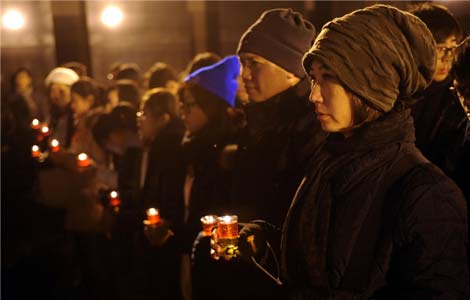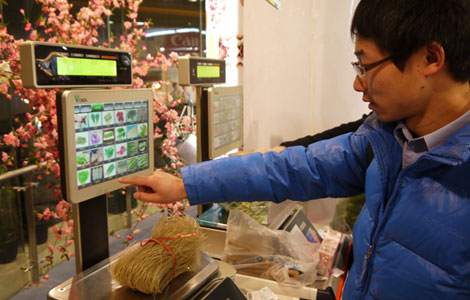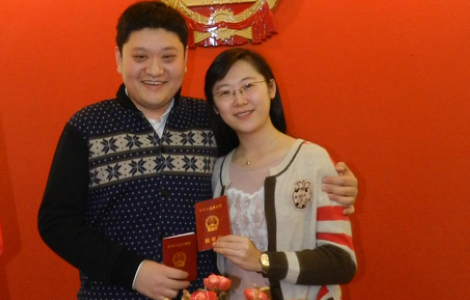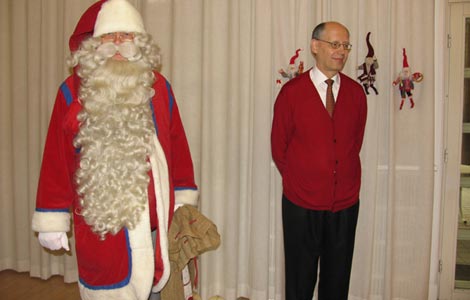
|
More than 60 students from around the world learn traditional Chinese acrobatics at Beijing International Arts School. Photos by Zou Hong / China Daily |
|
American student Sara Kunz. |
|
Cambodians Hun Reachsey (left) and Chen Chantha. |
|
Young students have to fight with the pain of training and the pain of being away from home. |
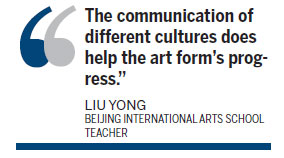
Beijing International Arts School is a big attraction for aspiring foreign acrobats. Chen Nan reports on a growing trend.
Sara Kunz wasn't interested in rest or recreation when she first visited Beijing. Curiosity about the country's culture, especially its acrobatics, inspired the 21-year-old Hawaiian to sign up for a one-year program at Beijing International Arts School, formerly known as Beijing Acrobatic School.
"I was a late starter in the world of circus so I wanted to train with people who would push me hard and have high expectations," says Kunz, who had just completed her bachelor's degree in fine arts at the University of Oregon in the United States before she arrived in China in the summer of 2011.
"I had seen several Chinese shows and was astounded and inspired, so I wanted to see how it's done and find out what the acrobatic scene is like in the capital of China."
Founded by the China National Acrobatic Troupe in 1999, BIAS has more than 60 students from around the world who, just like Kunz, learn traditional Chinese acrobatics.
Kunz had originally planned to study just the hula-hoop but ended up doing contortion, tumbling and hand balancing, too.
Her parents, who are doctors, used to have doubts about their daughter's career direction, but she has now convinced them that "pursuing a career and life in circus arts is not as crazy as it sounds".
"Now that I can do amazing skills and speak basic Chinese, my parents' attitudes have changed, especially after they saw my progress and how positively circus affected my life. Now they are supportive and proud of their daughter who is following her dream."
Kunz, who would love to work with Cirque du Soleil, says the acrobatic arts are always evolving, and she has more artistic freedom due to her China experience.
The mood in the school was old-fashioned and strict but thrilling, she says. The veteran Chinese teachers are mostly retired acrobats. They communicated through simple Chinese, English and gestures, she adds.
"Whether you are fighting with yourself about the pain of training, or the pain of missing home, or the pain of longing for your dream to finally arrive, it makes you stronger every day and I am so happy to have had this experience."
Like many old art forms, acrobatics is not as popular in China as it used to be. So retired Peking Opera singer and BIAS teacher Zhang Guangyun is impressed by the hardworking and passionate foreign students.
"They are not only faced with physical challenges but also the extreme mental challenge of being far away from home," Zhang says.
"They inspire us, as they add modern dance and electronic elements to the traditional Chinese acrobatic art forms."
Julius Bitterling, who is from a mountainous village in Berchtesgaden, Germany, and attended a circus school in France, studied in Beijing at the suggestion of his handstand teacher, who is Chinese.
"She convinced me to continue my circus career in China, so I went to Beijing, not only for the circus but also to learn about a new country," says the 21-year-old, who studies handstands, gymnastics and partner acrobatics at BIAS. Originally, his plan was to go to university to study physics and circus tricks were just a hobby.
Liu Yong, a veteran China National Acrobatic Troupe member who teaches at BIAS, says China's acrobatic shows have won lots of international awards and have a great reputation, which is why more international students choose to study in China.
"Acrobatic shows focus more on skill in China, while, in the West, the shows are more like dramas or plays," Liu says. "The communication of different cultures does help the art form's progress."
Ten Cambodian students, ranging in age from 12-23, are also keen to learn as much as they can before returning to their country as professional acrobats.
Chen Chantha, 23, who has been studying acrobatics since he was 7, will study at BIAS for nearly two years.
"We get up at 6 am and have handstand and martial arts classes that comprehensively help us become professional acrobatics," he explains.
He adds that the demand for acrobatic shows is growing in Cambodia and he wants to learn from the best in China.
Contact the writer at chennan@chinadaily.com.cn.
(China Daily 11/13/2012 page19)
